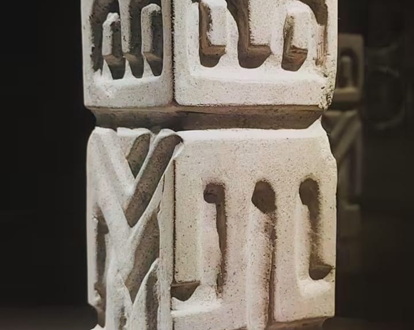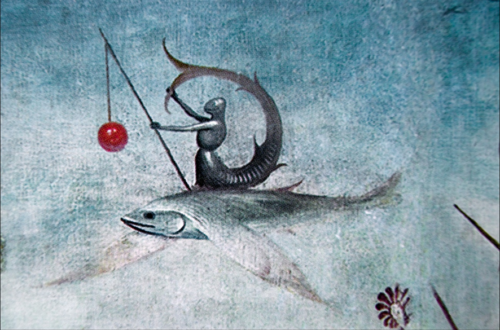(August 2019)
Diego Tapia Figueroa, Ph.D. and Maritza Crespo Balderrama, M.A.
«We are such stuff as dreams are made on”.
(William Shakespeare-The Tempest)
The university students with whom we are working at this stage, as well as different colleagues in clinical supervision spaces, often ask us for guidelines that guide their professional practice. It is an invitation to work relationally, socially with this compass: «language constructs reality». More than ascribing to theories and epistemologies as dogmas of faith, to induce to repeat the way of doing of those who «know», to apply techniques, protocols or general-universal «truths» and social control, it is about contributing to each professional finding his own style of being a therapist, of being with others in a process of permanent metamorphosis and transformation.
In this last entry of 2019, we share a possible sequence, for the therapeutic session and the process:
0. Adequate logistics: no desk in between; chairs in a circle. Give to sign, before starting, the «Well Informed Contract», where it is detailed that confidentiality is guaranteed; that it is a space for his/her true word, not for the empty word; the time and cost of the session; that our role is not to judge or criticize, but to understand; and so on.
1. Greet: «Welcome».
2. Each therapy is a unique process; each time is like the first time; we assume a posture of curiosity, respect, capacity for amazement, desire to learn with the consultants. You have to focus on the positive and make it grow.
3. Start by asking with curiosity and genuine human interest -options-: What is the most important thing you would like to tell about your story so that I can understand what person you are? How would you like to use this space? What should happen so that you leave with what you expected? What would you like to talk about?;
4. Listen deeply, without interrupting. Listen (to understand) the resonance and use it in favor of the consultant’s process; make our thoughts public, with criteria, in the right context, with a reflective language.
5. Develop fine sensitivity. Promote a climate of respect, responsibility, openness, flexibility, freedom, and trust.
5. Not assuming the role of the expert; calling into question hierarchies; avoiding welfare attitudes, saviors, do not give advice, or pretend to teach how to live.
7. Ask: What internal dialogues did you have while listening to me (or while listening to your partner)?
8. At the end of the therapy session: What do you hope to gain from this experience? What do you take with you from this session? What was useful to you?
That transformative dialogue called psychotherapy is based on being curious and open, rather than looking at the deficit, it is to seek and trust the resources and strengths of the consultants. The most important thing is the co-creation of a dialogical relationship, of a space of security and trust to:
A. Generate a relational link, a connection, weave relationships in favor of the needs of transformation of the history of the consultant. B. That the consultant feels respected, understood, accepted, recognized, legitimized. C. Work from a paradigm of complexity, accepting uncertainty and difference. D. With a perspective that contextualizes local relationships and cultures.
The main resources, which we mobilize as psychotherapists are:
1. The being of the therapist, which means choosing a place, a posture of Gentleness: a. Let it be heard with gentleness; b. Let him ask himself gently; c. That they speak with gentleness; d. That it be answered with gentleness; and. Let it be treated with gentleness.
2. With a language that values, invites, and generates the co-creation of the «with», of the «between», of this reflexive dialogical process. It has more to do with attitude than techniques. More than what to do, the question is how to be with the other. We dialogue by incorporating the polyphony of the multiple voices present in the conversation, creating possibilities.
3. We talk, we dialogue through the questions: a. Thoughtful, meaningful, different questions that contribute and are useful; b. We ask to connect and to understand; c. The «right» question or the «best» question is the one that connects with the last thing the consultant just said; d. Accompany to think and reflect differently, with the meaningful question.
4. We must trust in the dialogical process, engage in the joint construction of new meanings. Transformations consist of and result from the dialogical creation of a new narrative. Transformation occurs as dialogue flows.
5. We seek with creativity and good humor, to generate unprecedented possibilities and possible futures. The process seeks to expand relationships and meanings, it is oriented towards the future, towards the creation of what does not yet exist, of new possibilities.
6. Being a therapist, in a process of permanent becoming, maintaining that open position to question and reflect on your own prejudices, implies being in constant transformation as a professional and as a person. Know how to refer, in situations that we see that we will be useful to the consultants or when, due to unresolved issues of our own, we get hooked with the consultants, in a way that stagnates the relationship.
7. A relational ethic, under construction, which means working from a human rights perspective (especially in favor of the cause of children): a. Be radically present, wholeheartedly and with integrity, without anxiety; b. Consistently hold these questions, about what we build in the therapeutic process: Do they contribute? Matter? Are they useful? What is the different, transformative, and meaningful thing that we say and do together? c, Do annual processes of personal therapy (6 sessions a week in a row, at least); d. Seek and participate in clinical supervision or multi-vision spaces; and. Continuous research, updating, training, and professionalization; f. Generate and participate in «caring for the caregiver» spaces, to prevent burnout; g. Generate support networks (family, friends, social, professional, institutional); h. Have a life of your own and get satisfaction, beyond work; i. Enjoy art, literature, cinema, music; love and be loved.
As one writer said: to create the possibility of incarnating in social life, to give it meaning and new meanings, this triangle: love, poetry, rebellion.

English translation of Bruno Tapia Naranjo

